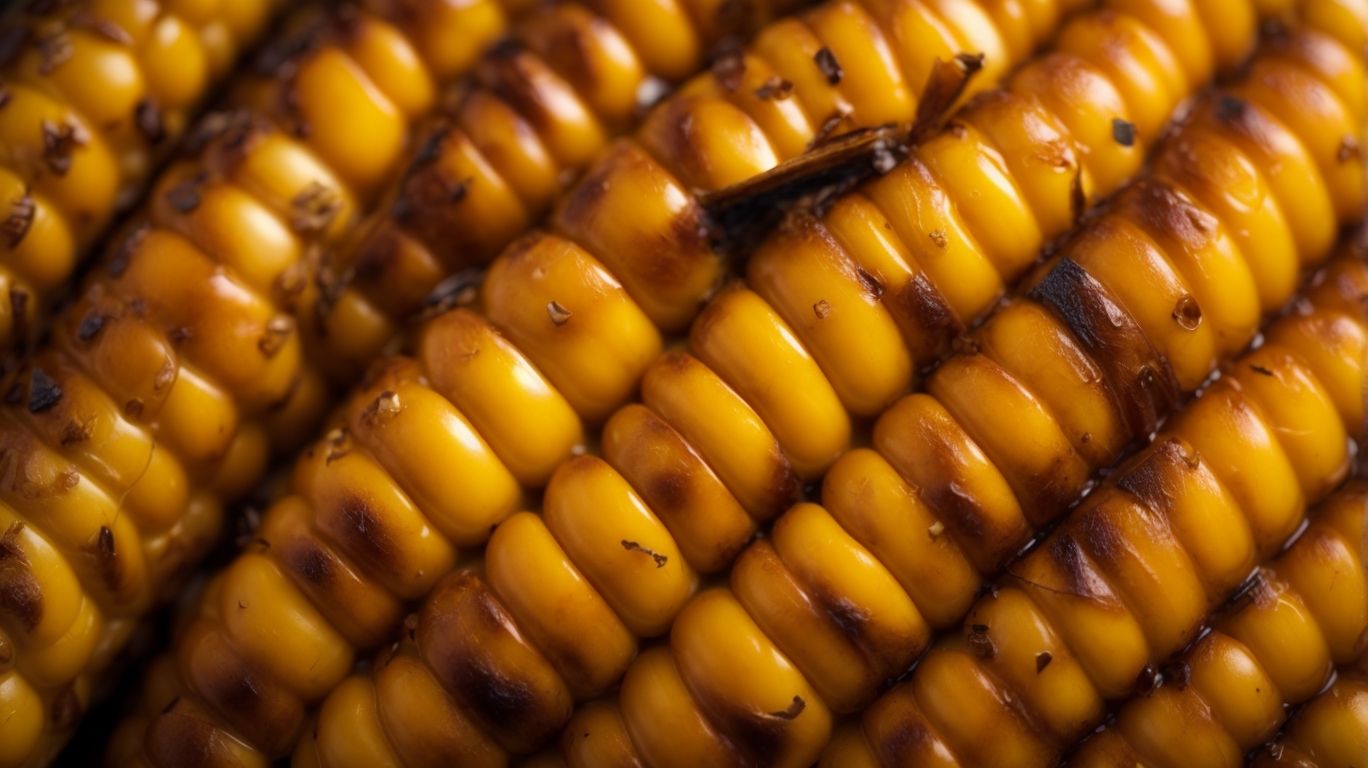How to Bake Corn on the Cob?
If you’re looking to elevate your corn on the cob game, you’ve come to the right place.
This article covers everything you need to know about baking this delicious summer staple. From choosing the perfect corn to seasoning options and baking techniques, we’ve got you covered.
Whether you’re a seasoned chef or a cooking novice, get ready to impress your taste buds with our tips and tricks for baking the perfect corn on the cob. Let’s get started!
Key Takeaways:
What is Corn on the Cob?
Corn on the Cob is a popular summer dish that features fresh corn cooked with various seasonings and flavors.
Whether you’re grilling, boiling, or roasting, there are endless ways to prepare corn on the cob to suit your taste. Some enjoy the simplicity of classic butter and salt, while others opt for more adventurous flavors like chili-lime or garlic parmesan. The kernels, bursting with sweetness, provide a satisfying crunch with every bite. Picture a vibrant table spread at a summer barbecue, where golden ears of corn on the cob gleam in the sunlight, inviting guests to savor this quintessential seasonal treat.
What are the Different Types of Corn?
There are several varieties of corn, including sweet corn, dent corn, flint corn, and popcorn, each serving different culinary and agricultural purposes.
Sweet corn, known for its high sugar content, is a popular choice for consumption as it is delicious when eaten fresh, grilled, or steamed.
Dent corn, also called field corn, serves as a primary grain crop and is widely used in livestock feed and industrial products due to its high starch content.
Flint corn, characterized by its hard outer layer, is commonly used for decorative purposes and can be found in ornamental corn displays during the fall season.
Popcorn, with its small kernels that burst open when heated, is a beloved snack enjoyed at cinemas, parties, and gatherings around the world.
How to Choose the Perfect Corn on the Cob?
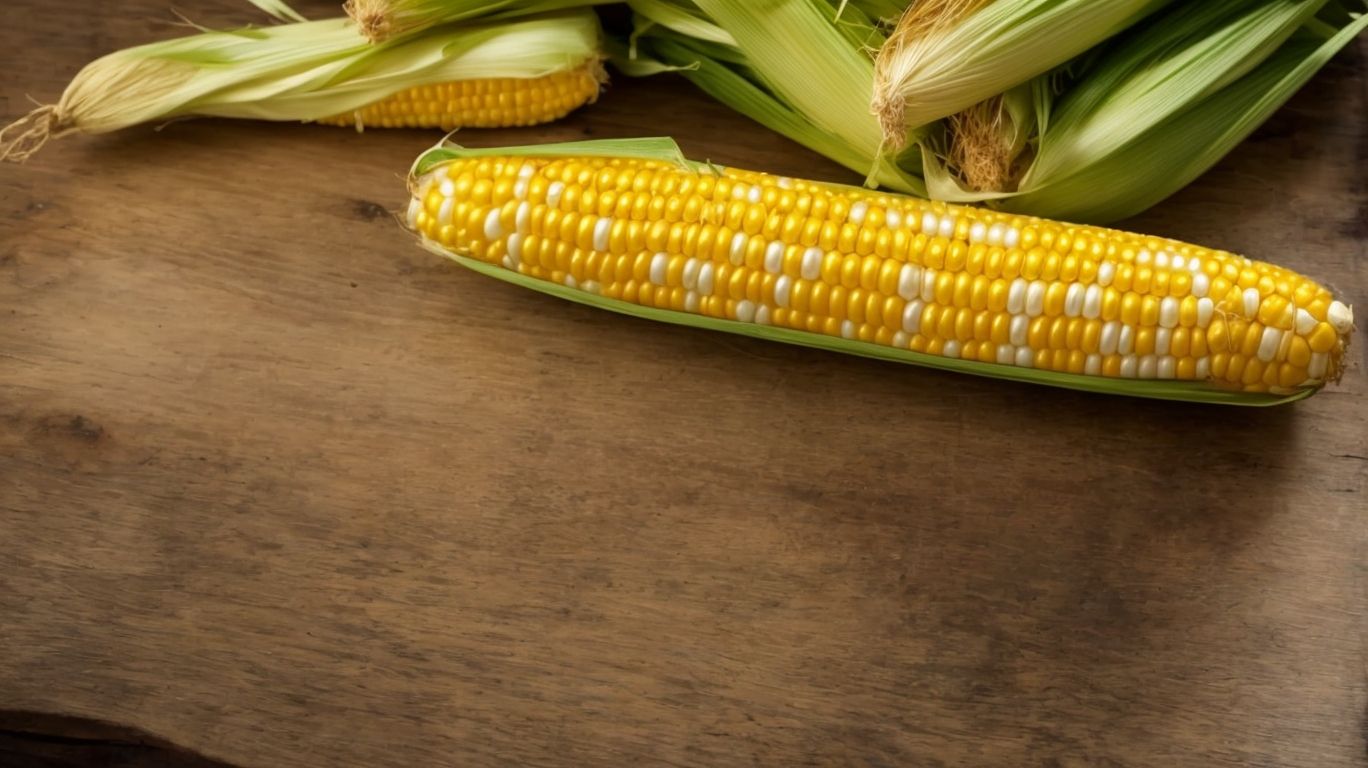
Credits: Poormet.Com – Austin Adams
Selecting the perfect Corn on the Cob involves examining the husk, feeling for plump kernels, and ensuring a fresh aroma that signifies optimal ripeness.
When choosing a high-quality ear of corn, it’s crucial to look for a bright green husk that is tightly wrapped around the cob, which indicates freshness and helps to retain moisture. Feel the husk for uniformity, avoiding any dry or shriveled areas that could mean the corn is past its prime. The kernels should appear plump and evenly spaced, indicating sweetness and juiciness. Another essential aspect is the scent – a fresh, slightly sweet aroma is a telltale sign of a perfectly ripe cob.
What are the Indicators of Freshness in Corn?
Fresh corn exhibits vibrant green husks, firm and plump kernels, and a sweet aroma that reflects its peak ripeness and flavor.
When selecting fresh corn at the market or grocery store, pay attention to the husk color – a bright green hue indicates freshness. Feel the kernels through the husk; they should be firm to the touch, not mushy or shriveled. A gentle squeeze can help determine if the kernels are plump and juicy. The aromatic quality of fresh corn is also a key indicator of its freshness – a sweet, earthy scent signifies the corn is at its prime for consumption.
Preparing the Corn on the Cob for Baking
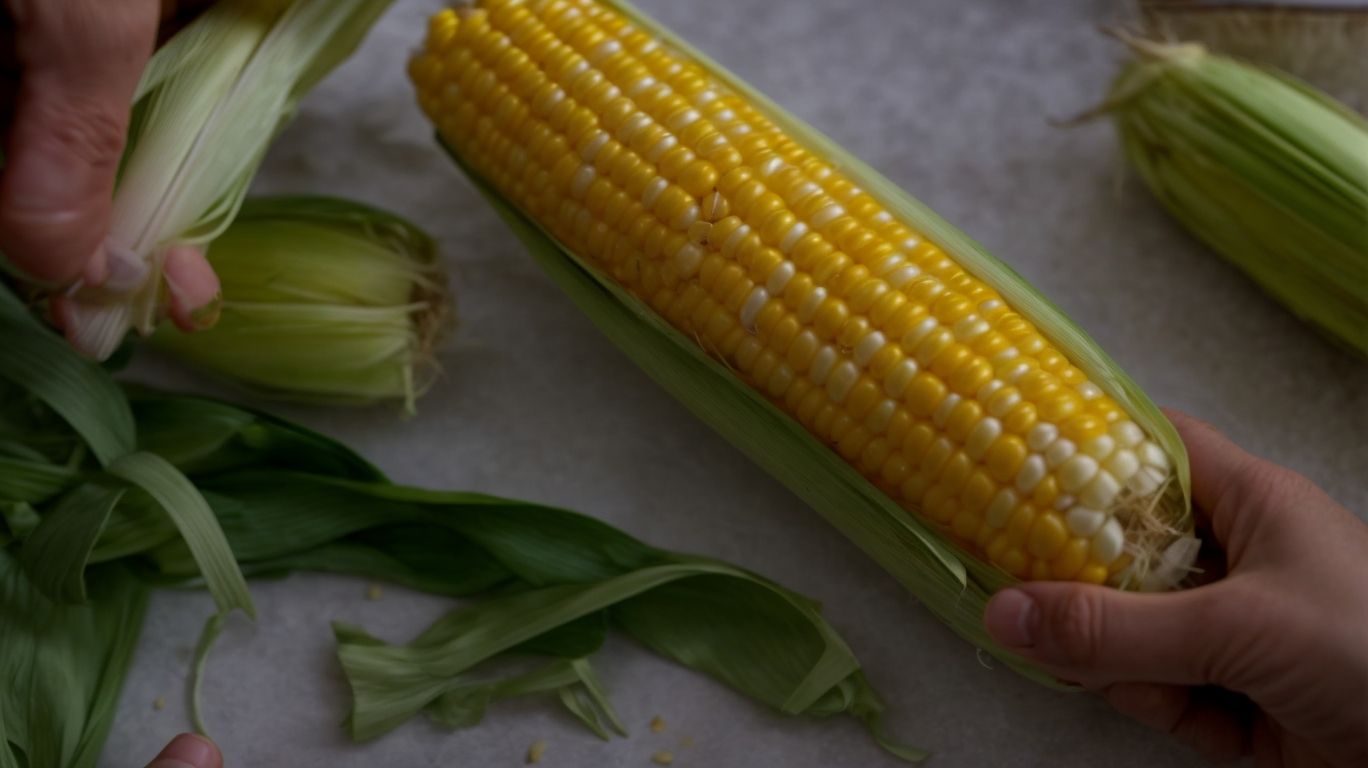
Credits: Poormet.Com – Russell Lopez
Before baking Corn on the Cob, it is essential to remove the husk and silks to expose the kernels for seasoning and cooking.
Start by gently peeling back the husk layers to reveal the fresh corn kernels beneath. Pull off the husk completely while ensuring all the silks are removed. Rinse the corn under cool running water to wash away any remaining silks.
Pat the corn dry and inspect for any missed silks, removing them by hand. This meticulous process is crucial as even a small strand can affect the taste and texture of the corn when baked.
Should You Soak the Corn Before Baking?
Soaking corn before baking is optional and can help infuse moisture into the kernels for a juicier texture and enhanced flavor.
One key benefit of soaking corn is that it prevents the kernels from drying out during the baking process, resulting in a more tender and flavorful outcome. To achieve optimal results, consider adding a pinch of salt or sugar to the soaking water for an extra boost of flavor. It is also recommended to soak the corn in the husk to retain moisture and prevent direct exposure to the heat, ensuring even cooking. Experiment with different soaking times to find the perfect balance between moisture retention and texture for your preferred corn dish.
How to Remove the Husk and Silks?
Removing the husk and silks from corn involves peeling back the outer layers to reveal the kernels and then gently removing any remaining silk strands for a clean preparation.
When preparing corn for baking, the first step is to choose fresh ears of corn with bright green husks that feel slightly damp to the touch, an indicator of freshness.
Once you have selected the corn, firmly grasp the top of the husk and pull it down toward the base, completely removing the husk while ensuring that the kernels remain intact.
After the husk is removed, inspect the corn for any remaining silks, the fine threads that can be nestled between the kernels.
To remove these silks, run your hands over the corn to feel for any remaining strands and then use a damp cloth or vegetable brush to gently rub off the silks while being careful not to damage the kernels.
Seasoning Options for Baked Corn on the Cob
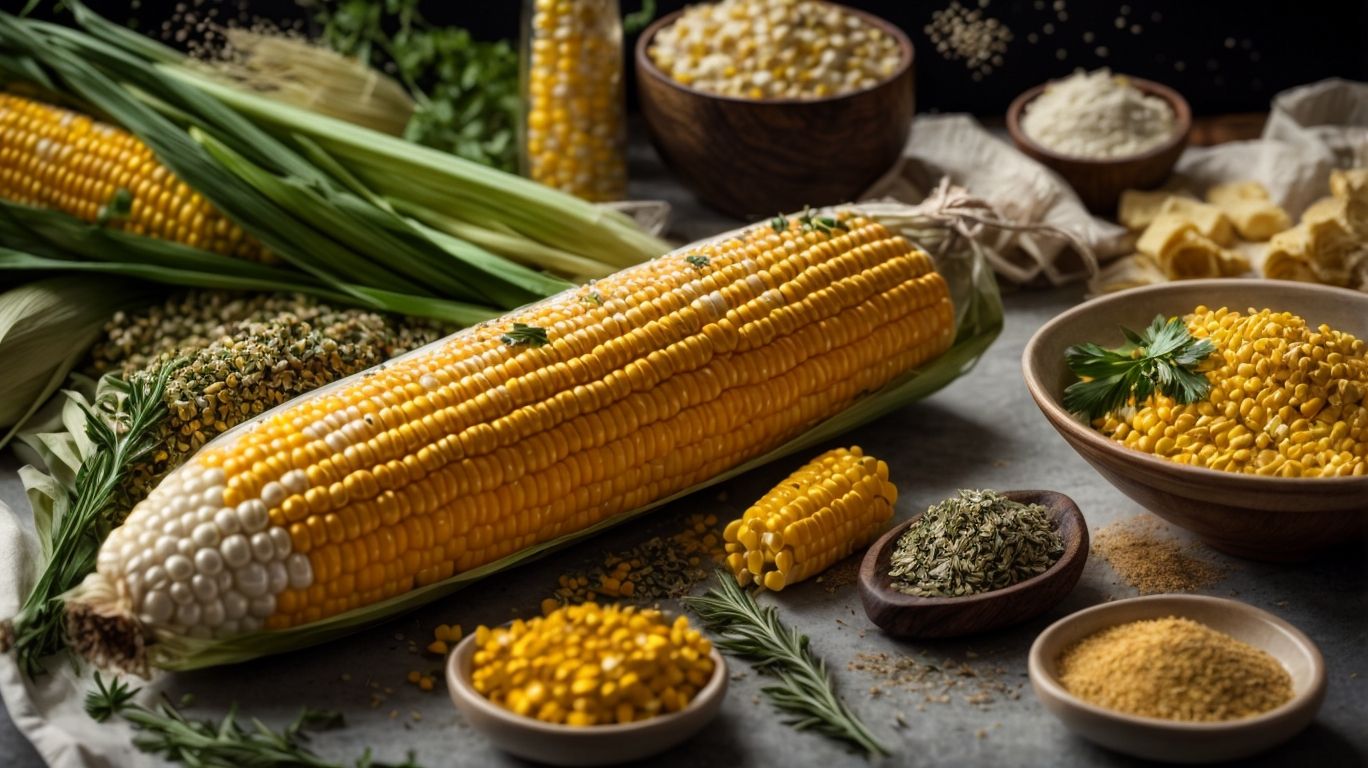
Credits: Poormet.Com – Randy Mitchell
Enhance the flavor of Baked Corn on the Cob with a variety of seasonings such as garlic butter, Creole seasoning, smoked paprika, and fresh herbs.
Each seasoning option brings a unique twist to the dish.
- The homemade garlic butter adds a rich, savory flavor with a hint of garlicky goodness.
- On the other hand, the savory Creole seasoning offers a spicy kick that tantalizes the taste buds.
- For those looking for a smoky taste, smoked paprika complements the sweetness of the corn perfectly.
- The addition of aromatic herbs like thyme, rosemary, or basil brings a fresh and fragrant element to the dish, enhancing its overall appeal.
What Spices and Herbs Go Well with Corn on the Cob?
Spices and herbs that complement Corn on the Cob include smoked paprika, chili powder, parmesan cheese, and a blend of fresh parsley, rosemary, and thyme for a burst of flavor.
Pairing corn with smoked paprika adds a rich, smoky depth to the sweet kernels, while a sprinkle of chili powder offers a kick of heat. The sharpness of parmesan cheese can cut through the natural sweetness of the corn, creating a delightful contrast in each bite. The herbaceous combination of parsley, rosemary, and thyme adds freshness and complexity to the dish, elevating the overall flavor profile.
How to Make a Flavorful Butter Sauce for Corn on the Cob?
Create a delectable butter sauce for Corn on the Cob by combining melted butter with garlic powder, homemade Italian seasoning, and a touch of salt and pepper for a savory finish.
Begin by melting a generous amount of butter in a saucepan over low heat until it reaches a smooth consistency.
Next, add a teaspoon of garlic powder to infuse the sauce with a rich, aromatic flavor, complementing the sweetness of the corn perfectly.
Then, sprinkle in your homemade Italian seasoning, crafted with oregano, thyme, basil, and rosemary, to elevate the taste profile and add a Mediterranean flair.
Season the sauce with a pinch of salt and a dash of freshly ground black pepper for a well-balanced and savory finish.
Baking the Corn on the Cob
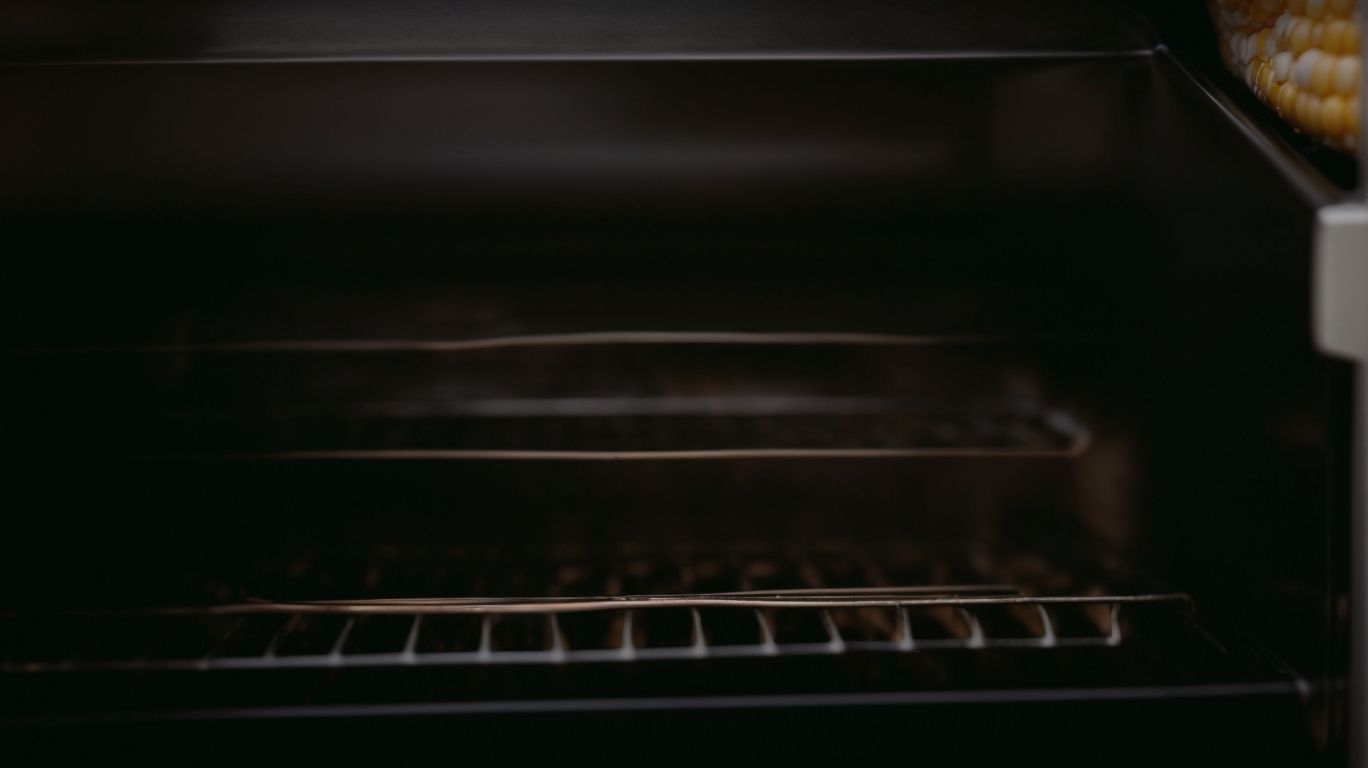
Credits: Poormet.Com – Bradley Scott
Baking Corn on the Cob involves placing seasoned cobs on a baking sheet, roasting them in the oven at the recommended temperature, and monitoring the baking time for optimal results.
To begin, preheat the oven to 375°F for a perfect balance of cooking the corn evenly without drying it out. Once the oven reaches the desired temperature, carefully place the seasoned cobs on the baking sheet, ensuring they are evenly spaced for uniform cooking. Roasting time typically ranges from 30 to 45 minutes, depending on the size and freshness of the corn. To check for doneness, pierce the kernels with a fork; they should be tender but still slightly firm. This technique guarantees a delectably roasted corn on the cob that is bursting with flavor.
What Temperature and Time is Best for Baking Corn on the Cob?
The ideal temperature for baking Corn on the Cob ranges between 375-400°F, with a baking time of approximately 25-30 minutes to achieve tender and flavorful kernels.
It’s essential to preheat your oven to the specified temperature range to ensure even cooking and perfect caramelization of the corn. Before placing the cobs in the oven, you can add a tablespoon of butter on each cob to enhance the flavor and keep the kernels moist during baking. For extra flair, sprinkle some seasonings like paprika, garlic powder, or parmesan cheese on top for a tasty twist.
Should You Wrap the Corn in Foil?
Wrapping Corn on the Cob in aluminum foil before baking helps retain moisture, infuse flavors, and ensure even cooking for a delectable outcome.
By enclosing the corn in foil, the steam generated during cooking is trapped within, creating a moist environment that prevents the corn from drying out. This method also allows the flavors of any herbs, spices, or seasonings you add to penetrate the kernels, enhancing the taste profile of the corn. The foil acts as a shield, protecting the corn from direct heat exposure, resulting in uniform cooking and preventing any burnt spots. The convenience of simply wrapping and placing the corn in the oven or on the grill makes this technique a hassle-free and efficient way to prepare delicious corn on the cob.
Serving and Enjoying Baked Corn on the Cob
Indulge in the delights of Baked Corn on the Cob by serving it with delicious toppings such as sour cream, mayo, crumbled feta cheese, and a sprinkle of additional seasonings for added flair.
For a tangy twist, squeeze a fresh lime over the corn and sprinkle it with chili powder. Alternatively, spread some garlic butter over the warm corn and top it off with a generous amount of grated Parmesan cheese. If you’re feeling adventurous, try drizzling the corn with a balsamic glaze and garnishing it with chopped fresh herbs like cilantro or parsley. The possibilities are endless when it comes to enhancing the flavors of this classic dish!
What are Some Delicious Toppings for Baked Corn on the Cob?
Delight your taste buds with toppings like tangy sour cream, creamy mayo, tangy feta cheese, and a sprinkle of homemade Creole seasoning or garlic butter for a burst of flavor on Baked Corn on the Cob.
Take your corn on the cob to the next level by experimenting with a plethora of delectable condiments and cheeses. Imagine a drizzle of zesty lime aioli or a dusting of spicy chipotle powder complementing the sweetness of the corn kernels. Consider adding a generous dollop of jalapeño-infused cream cheese for a spicy kick, or if you prefer something milder, a sprinkle of parmesan shavings can add a touch of sophistication. Play around with smoked paprika, cajun seasonings, or a hint of truffle salt to elevate the flavors and textures, creating a feast for the senses.
How to Store Leftover Baked Corn on the Cob?
When storing leftover Baked Corn on the Cob, wrap the cooled cobs in foil or airtight containers and refrigerate them for up to 3 days, reheating them gently before serving for optimal flavor.
Proper refrigeration is key to maintaining the freshness of the corn. Avoid storing it at room temperature as it can lead to bacterial growth. When ready to reheat, avoid using the microwave, which can make the corn rubbery. Instead, gently reheat by steaming or grilling the corn. This method helps to retain the juicy sweetness of the kernels and prevents them from becoming dried out.
Before serving, sprinkle the corn with a pinch of salt and a drizzle of olive oil for an added burst of flavor. You can also get creative by adding herbs like parsley or a squeeze of fresh lemon juice. These extra touches can elevate the dish and make it feel like a fresh batch every time you enjoy the delicious Baked Corn on the Cob leftovers.
Frequently Asked Questions
How to Bake Corn on the Cob?
Question: What ingredients do I need to bake corn on the cob?
To bake corn on the cob, you will need fresh corn, butter, salt, and pepper.
How to Bake Corn on the Cob?
Question: How long does it take to bake corn on the cob?
It typically takes about 20-25 minutes to bake corn on the cob at 375°F.
How to Bake Corn on the Cob?
Question: Can I bake corn on the cob without husks?
Yes, you can bake corn on the cob without husks by wrapping it in foil before placing it in the oven.
How to Bake Corn on the Cob?
Question: What is the best way to season baked corn on the cob?
You can season baked corn on the cob with a variety of flavors such as garlic powder, parmesan cheese, or even chili powder.
How to Bake Corn on the Cob?
Question: Can I bake frozen corn on the cob?
Yes, you can bake frozen corn on the cob by adding a few extra minutes to the baking time.
How to Bake Corn on the Cob?
Question: Is it necessary to preheat the oven before baking corn on the cob?
Yes, it is important to preheat the oven before baking corn on the cob to ensure even cooking.

